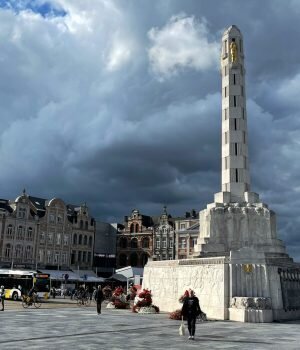Deadline: December 1, 2018 00:00 CET| Apply here
[Oops, the opportunity has already expired. Sign up to AlphaGamma weekly newsletters to stay ahead of the game]
Dates: March 24-29, 2019
Eligibility: Full-time undergraduate and graduate students during the 2018-19 academic year from any nationality are eligible to apply.
Caltech Space Challenge 2019
The Caltech Space Challenge brings 32 talented and highly-motivated students to the Caltech campus to participate in a week-long space mission design competition.
The participants are split into two teams and both teams work under the mentorship of experts from industry, NASA and academia to design their mission concept from scratch to final proposal.
The Challenge is a unique opportunity for young and enthusiastic students to build technical and teamwork skills, interact with world-renowed experts in space exploration and connect to like-minded peers from all around the world.
Reasons to apply
- Participate in one of the top space challenges in the world
- Work with colleagues who are finally up to your standards of excellence in science, engineering and other disciplines to tackle some of the toughest problems in space exploration today
- Learn in a unique multidisciplinary environment consisting of students, faculty members and some of the sharpest minds in industry
- Connect directly with some of the leading companies in the space industry and have your resume provided directly to them for hiring consideration
2019 challenge theme
Beyond Earth, are there contemporary habitats elsewhere in the universe with necessary conditions to sustain life and do organisms live there now? [Planetary Science Decadal Survey 2011]
This question has intrigued mankind for centuries yet the answer remains unknown up to the present day.
It is therefore not surprising that the most recent planetary science decadal survey lists the search for life in our own solar system among the key scientific questions for space missions in the near future.
While in the early days of solar system exploration we hoped to find clues to the question of extraterrestrial life within the habitable zone, recent discoveries of internal heating due to tidal effects have shifted our attention to the satellites of gas giants in the outer solar system like Jupiter and Saturn.
In particular, Cassini discovered that an object initially thought to be a dead body is one of the most likely harbors of contemporary extraterrestrial life: Saturn’s moon Enceladus.
Cassini’s measurements not only reported evidence for a differentiated interior structure with a subsurface water ocean possibly in contact with the rocky core, it also discovered geyser-like jets in the south polar region of Enceladus, dubbed Tiger Stripes.
These jets vent water vapor and solid material from the interior ocean into space. During close flybys Cassini’s mass spectrometer detected complex organic compounds contained in the plumes.
This finding fueled speculations about the presence of life in Enceladus’ subsurface ocean, but Cassini’s instrumentation was not designed to detect life, leaving this significant question to be answered by follow-on missions.
What if the risk could be spread among multiple small, cost-effective landers?
Ideally, probing Enceladus for the presence of life means accessing not only its plumes, but also the most likely location of indicative biomolecules: the surface orifices of its geysers, located in the south polar Tiger Stripe region.
Given the incomplete knowledge of Enceladus’ surface and its geysers, a classic single-lander mission is too risky. But, what if the risk could be spread among multiple small, cost-effective landers?
This will be the guiding question of the 2019 Caltech Space Challenge. In response, participants will create a novel mission design to probe for evidence of the presence of life on Enceladus using a network of small landers.
Interested in applying for the Caltech Space Challenge 2019? Register your participation by following the application link and taking the suggested steps.
For more opportunities, check our opportunities section and subscribe to our weekly newsletters.






